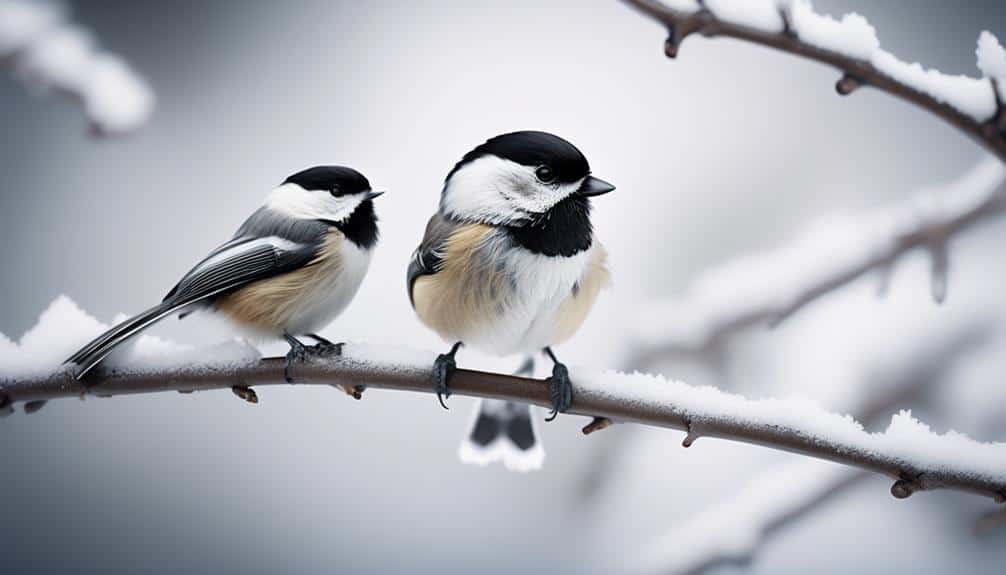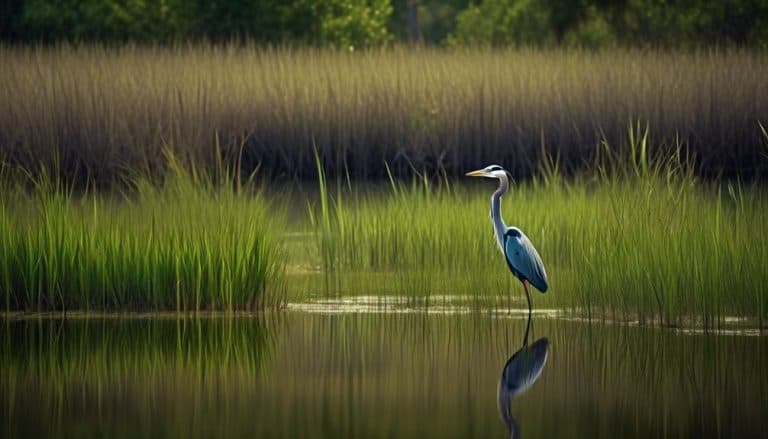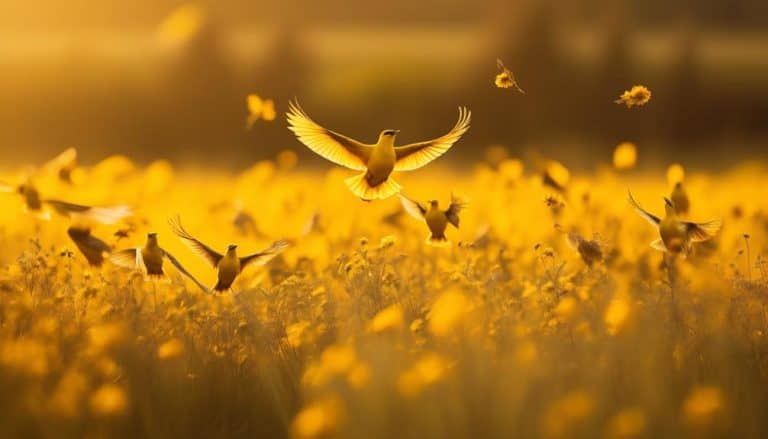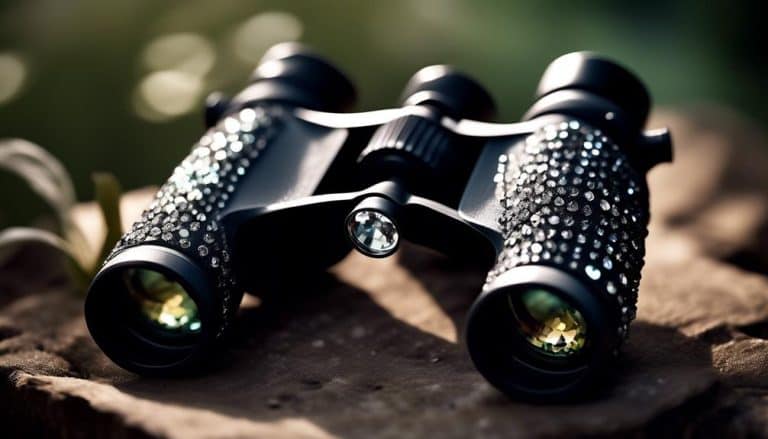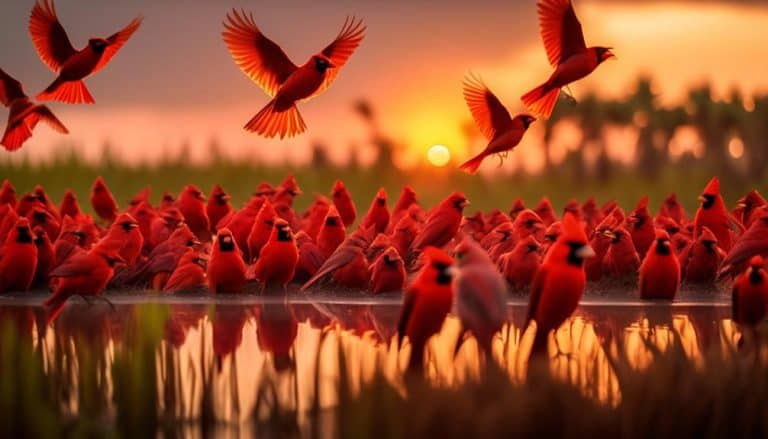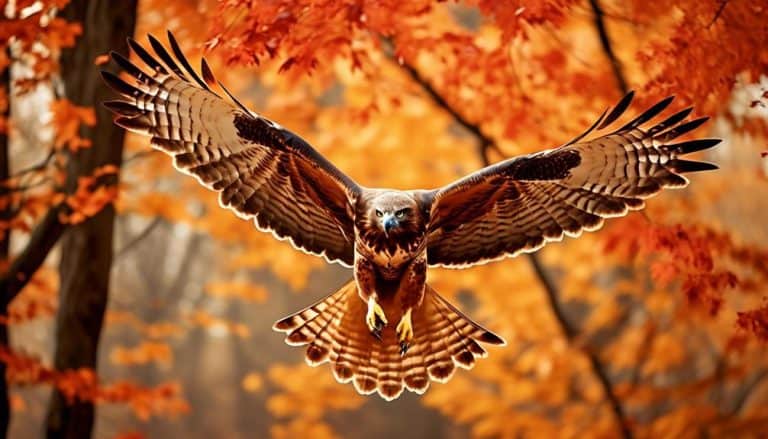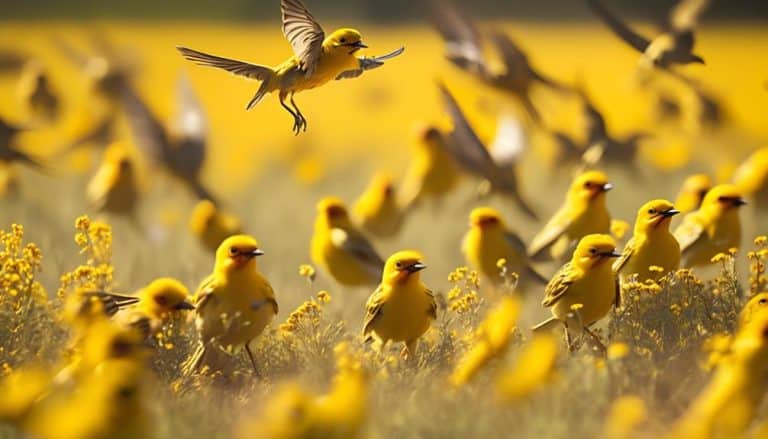Did you know that Ohio is home to over 20 species of black and white birds? These stunning creatures can be found throughout the state, from woodlands to wetlands and everywhere in between.
From the striking woodpeckers that drum on trees to the delightful songbirds that fill the air with their sweet melodies, there is no shortage of fascinating black and white birds to discover in Ohio.
So, if you're curious to learn more about these feathered wonders and the unique roles they play in our ecosystem, then join me on this journey as we explore the diverse world of black and white birds in Ohio.
Woodpeckers: Ohio's Striking Black and White Birds
Woodpeckers, with their striking black and white plumage, are a prominent and fascinating species found throughout Ohio. These birds are known for their unique behaviors and play an important role in the ecosystem.
Woodpeckers are renowned for their ability to drum on trees, using their strong beaks to create resonating sounds. This behavior serves multiple purposes, including attracting mates, establishing territories, and communicating with other woodpeckers.
Woodpeckers are also known for their remarkable ability to excavate nesting cavities in trees. These cavities provide shelter for the birds and are crucial for their reproductive success. Not only do woodpeckers create cavities for their own use, but they also create additional cavities that serve as homes for other cavity-nesting species, such as chickadees and bluebirds. This behavior highlights the important ecological role that woodpeckers play in promoting biodiversity within their habitat.
Conservation efforts are essential to ensure the survival of woodpecker populations in Ohio. Loss of habitat, primarily due to deforestation and urbanization, poses a significant threat to these birds. Protecting and preserving suitable nesting sites and providing sufficient food sources are crucial for their survival. Additionally, raising awareness about the importance of woodpeckers and their role in the ecosystem can help garner support for conservation initiatives.
Black-capped Chickadees: Delightful Songbirds of Ohio
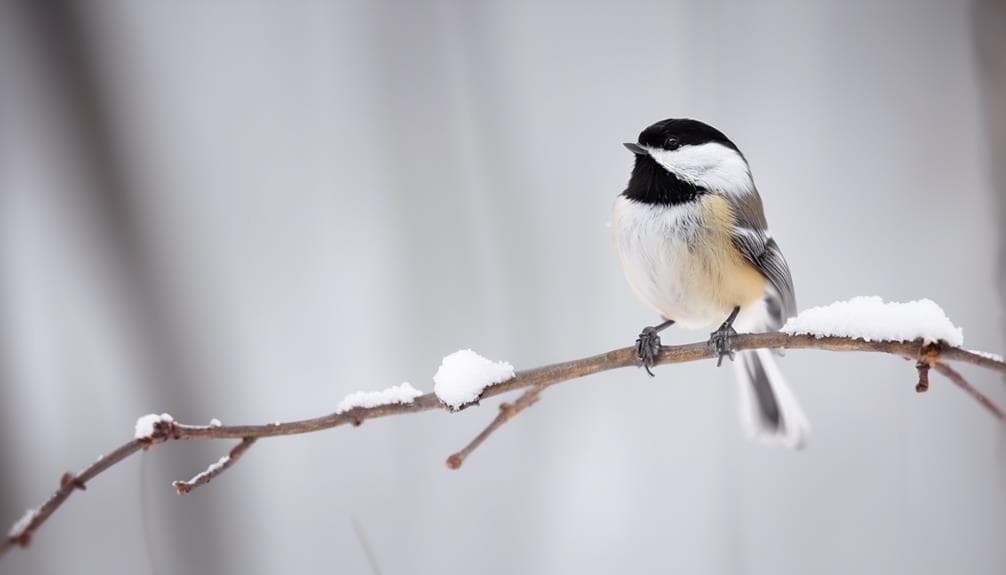
Black-capped Chickadees, native to Ohio, are delightful songbirds known for their distinctive black cap, white cheeks, and cheerful song. These small birds can be found in various habitats throughout Ohio, including woodlands, parks, and suburban areas.
Here are some interesting facts about black-capped chickadees:
- Vocalization: Black-capped chickadees have a wide range of vocalizations. Their most famous call is their namesake 'chick-a-dee-dee-dee' song, which can be heard throughout Ohio's birdwatching hotspots. This song serves as a way to communicate with other chickadees and establish territories.
- Food Preferences: These songbirds have a diverse diet, consisting of insects, seeds, berries, and even small fruits. They've the remarkable ability to store and retrieve food, hiding it in various locations and relying on their excellent memory to find it later.
- Nesting Behavior: Black-capped chickadees build their nests in tree cavities or birdhouses. They line their nests with soft materials such as moss, fur, and feathers, creating a cozy environment for their young. They're also known to excavate their own nest cavities, using their strong beaks to create a suitable nesting site.
- Survival Skills: Black-capped chickadees are adaptable and resilient birds. They've the ability to lower their body temperature during cold winter nights, conserving energy and surviving harsh conditions. They also have a unique adaptation called 'incubation hypothermia,' where they can temporarily decrease their body temperature to conserve energy while incubating their eggs.
Observing black-capped chickadees in their natural habitat is a true delight for birdwatchers in Ohio. Their charming appearance, melodic songs, and fascinating behaviors make them a beloved species among nature enthusiasts.
Northern Flickers: Unique Woodpeckers in Ohio
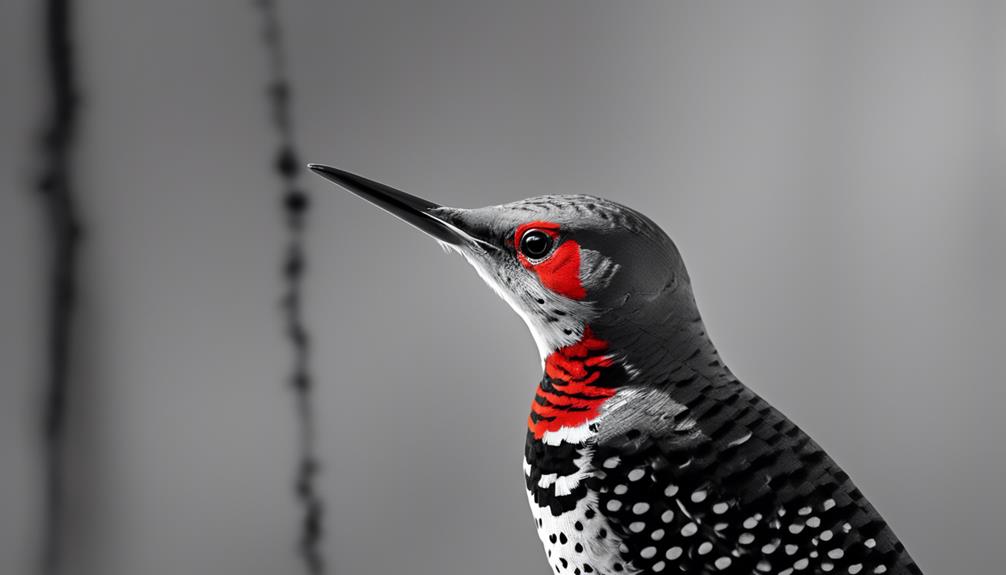
Northern Flickers, a unique species of woodpecker found in Ohio, possess distinct characteristics and behaviors that set them apart from other avian species. These birds are known for their unique behavior of foraging on the ground, in addition to their traditional woodpecker behavior of drumming on trees. This behavior is quite unusual among woodpeckers, as they're primarily known for their tree-dwelling habits.
The Northern Flicker's feeding habits also contribute to its uniqueness. They have a diverse diet, consisting of insects, fruits, seeds, and even small vertebrates. This wide range of food sources allows them to adapt to various habitats and environments.
The unique behavior and feeding habits of Northern Flickers make them an interesting species to observe in Ohio. Whether they're excavating a nest cavity, foraging on the ground for ants, or drumming on trees to mark their territory, these woodpeckers exhibit fascinating behaviors that make them stand out among other avian species.
Pied-billed Grebes: Graceful Divers in Ohio's Waterways
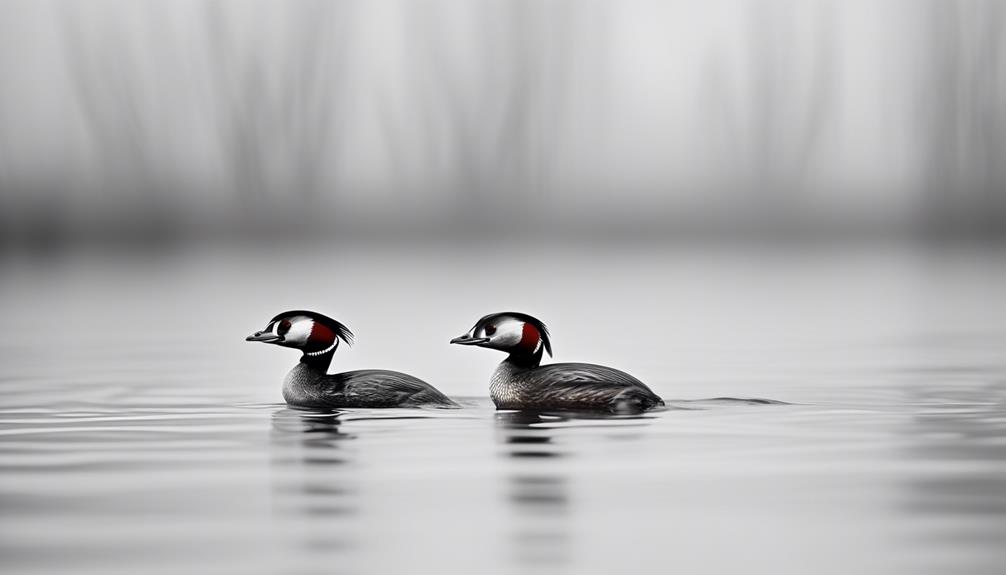
Pied-billed Grebes, known for their graceful diving abilities, are a common sight in Ohio's waterways. These black and white birds, often referred to as Ohio's hidden divers, lead fascinating lives beneath the surface. Here are four intriguing aspects of the secret lives of pied-billed grebes:
- Diving prowess: With their unique ability to dive underwater, pied-billed grebes can disappear beneath the water's surface effortlessly. Their streamlined bodies and lobed toes enable them to navigate through the water with exceptional agility.
- Camouflage mastery: These birds have a mottled black and white plumage that allows them to blend seamlessly with their watery surroundings. Their cryptic coloration helps them remain hidden from predators and potential prey.
- Fishy diet: Pied-billed grebes primarily feed on small fish, insects, and aquatic invertebrates. Their diet consists of species such as minnows, tadpoles, and crayfish, which they capture by diving and swimming underwater.
- Nesting rituals: During breeding season, pied-billed grebes construct floating nests made of vegetation in shallow water. Both parents actively participate in incubating the eggs and caring for the young, which are born precocial and able to swim shortly after hatching.
Observing these graceful divers in Ohio's waterways offers a glimpse into the intriguing world of pied-billed grebes. Their diving abilities, camouflage tactics, diet, and nesting rituals make them a fascinating subject of study for bird enthusiasts and nature lovers alike.
American Coots: Fascinating Waterbirds of Ohio
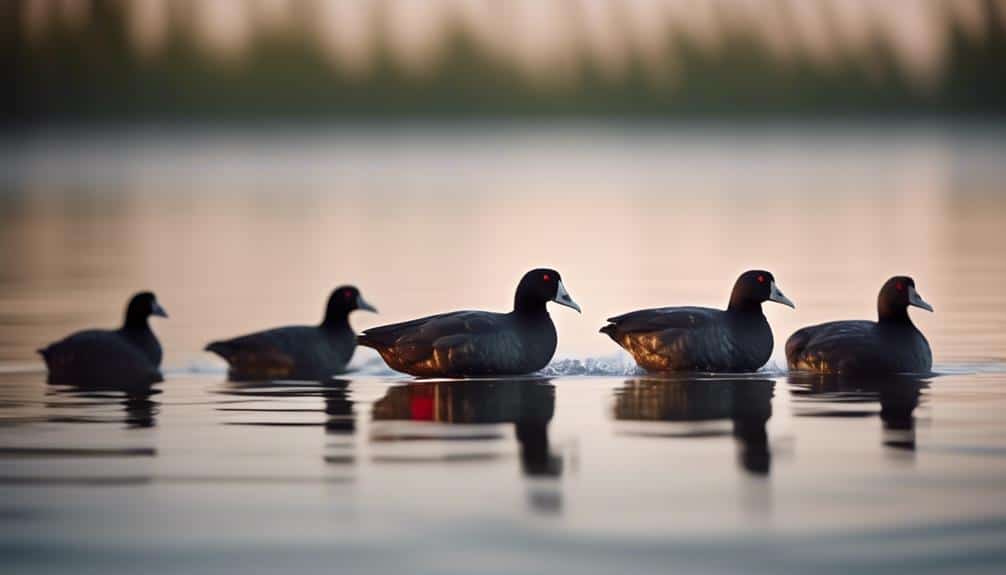
American Coots, fascinating waterbirds found in Ohio, showcase unique characteristics and behaviors that make them a captivating subject of study for ornithologists and nature enthusiasts.
These birds, scientifically known as Fulica americana, are distinguishable by their dark gray plumage, white bills, and distinctive white frontal shields. One of the most remarkable behaviors of American Coots is their ability to walk on floating vegetation, thanks to their long toes that have lobes of skin on the sides. This adaptation allows them to distribute their weight and move effortlessly on water plants.
American Coots prefer freshwater habitats such as lakes, ponds, and marshes. They're commonly found in wetlands with abundant vegetation, as they rely on it for foraging and nesting. These waterbirds are omnivorous, feeding on a variety of plant material, insects, small fish, and other aquatic invertebrates. They're known for their diving capability, often submerging themselves to search for food underwater.
During the breeding season, American Coots form monogamous pairs and build nests near the water's edge. Their nests are constructed from dead plant material and are often hidden amidst dense vegetation. The female typically lays 6-12 eggs, which are incubated by both parents. Once the chicks hatch, they're precocial and able to swim and feed themselves shortly after birth.
Frequently Asked Questions
Are There Any Other Types of Black and White Birds in Ohio Besides Woodpeckers, Chickadees, Flickers, Grebes, and Coots?
Yes, there are other black and white birds in Ohio besides woodpeckers, chickadees, flickers, grebes, and coots. These birds can be found in various habitats and have different feeding habits.
What Is the Average Lifespan of Black and White Birds in Ohio?
The average lifespan of black and white birds in Ohio varies depending on the species. It is important to consider their behavior patterns and environmental factors that can impact their longevity.
How Do Black and White Birds in Ohio Communicate With Each Other?
Black and white birds in Ohio communicate through a combination of vocalizations and body language. They use various calls, songs, and gestures to convey messages to one another. Plumage patterns also play a role in their communication.
What Are the Main Predators of Black and White Birds in Ohio?
The main predators of black and white birds in Ohio are diverse and pose significant threats to their population. Understanding predation patterns is crucial for assessing the impact on the ecosystem.
Are Black and White Birds in Ohio Migratory or Do They Stay in the State Year-Round?
Black and white birds in Ohio, like many bird species, exhibit migratory behavior. They undertake long-distance journeys to find suitable feeding grounds and adapt to different seasons by following food availability and favorable climate conditions.
Conclusion
In conclusion, the black and white birds of Ohio symbolize the harmony and balance found in nature. Their contrasting colors represent the coexistence of light and darkness. Additionally, their diverse species showcase the richness and complexity of the avian world.
Through their unique characteristics and behaviors, these birds contribute to the intricate web of life in Ohio's ecosystems. Studying and appreciating these remarkable creatures allows us to better understand and protect the natural wonders that surround us.

